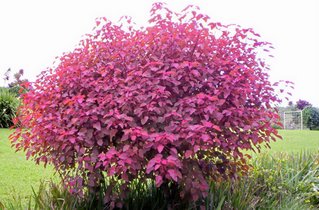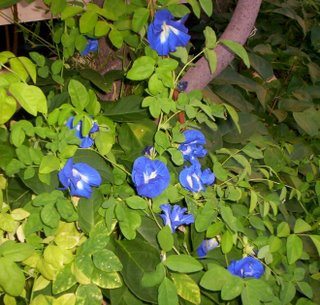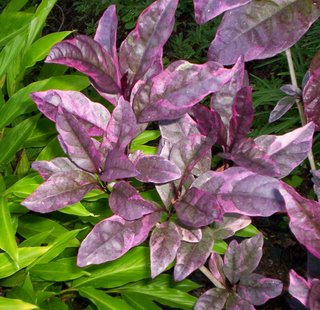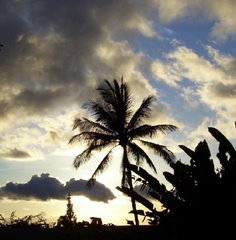Garden Colors on Election Day
Red can sometimes be a very in your face color. When it crowds out any hint of another color and never changes no matter what the season it can get a bit tiresome to look at.
Blue is a more difficult color to find in the garden and sometimes you have to physically move some of the Blue to get enough of them to sit still and be organized for greater impact.
Perhaps Blue is less common in plants because they did not want to compete with the heavens above.
Purple is always fascinating because it is such an unexpected color, particularly in the body of a plant.
Purple pinstripes with a backing of green and a hint of silver. Now that is a nice looking plant. It is far more intriguing and involved than the strong solid Red.
Hooray for Purple!


6 comments:
Yes, a good balance of color is easy on the eyes.
In early spring the Nandinas are red and the Photinias send out their red tips right when one wants delicacy and a feeling of precious new growth. It gets boring so fast.
But Persian Shield never bores me! Your plants look much neater and denser than mine do, but yours just keep growing, I guess?
Mine will freeze, die to the ground and usually resprout in spring.
Annie
The size of the leaf and the quality of the color in the Persain Shield is extremely variable depending on soil quality and fertility and the light quality they receive.
Mine are all clones from stem cuttings and they are forever wandering around variations on a theme.
Perfect! I'm totally primed for a discussion of color. It's been so depressing getting home from work when it's dark...I barely get to see the garden anymore since I started my new job. Which is probably a good thing in some respects...I've been 'too close' to the garden for months now. Time to step away and look elsewhere for awhile. Get some perspective. Come back in spring with new eyes. Plus, there will be changes.
Anyhow...color.
I'm a huuuge fan of purple. Probably too much so. I've got it but only in flowers. Tibouchina, porcelain berry, Doug Iris, Bartlettina, a bunch of bulbs, peas, a native called Trichostema and some lantana. (And this year hopefully cineraria.)
As far color in the body of the plant goes, I want some reds in the bark, but I'm mostly happy if the body brings me interesting textures. Color is a secondary consideration.
The color I really want in the body (if any) is red--or red/brown.
I feel like red is the best balance for green in the garden, and I'm always trying to bring in more red. Containers help do that too. And I mean red/brown, not red/pink.
I think red looks good with everything but yellow (McDonald's).
I'm told yellow is an acquired taste in the garden. I guess there's a 'rule' about only having one source yellow in the border... I'm not into that at all; I like yellow a lot, but I do try to keep it away from red. I had to remove Salvia 'Hot Lips' from close proximity to Cotula lineariloba 'Big Yellow Moon' (which I want to endorse as a spreading groundcover for gardeners who need such a thing.) Other yellows in my garden come from Rannuculus cortisiflorus, Sisyrinchium, bamboo, and some yellow-orangey Mimulus.
Regardless of all that, what I have a lot of in my garden is blue and pink!
I learned about the meaning of blue and pink (and sometimes purple?) together just last year while helping to renovate a small cottage. That was the first and only time I ever saw a room painted blue-pink. According to a next door neighbor, the previous residents chose the color scheme for their bedroom for the symbolism behind it.
Whenever we discuss work methods we used on that house, I still refer to that room as "the blue-pink room" -- even though it is now painted a more conservative (if unimaginative) antique white.
More about blue and pink...
That was a wonderful post from Ellen. Pink and Blue and BVM skies.
Post a Comment